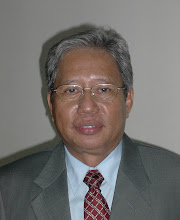Climate change threatens food production, agriculture, water supply, as well as the existance of small islands, coral reefs, and wetlands. What are we going to do about it? Carbon trading is one way that has been seen as an important action, which every countries has to do in reducing the greenhouse gas pollution. Under the scheme that known as "cap and trade", each government sets an overall limit on the amount of carbon the economy can produce and provides permits to industry up to the nominated amount. A carbon intensive industry has to pay extra if they exceed their allocation.
Asia’s mega delta cities are of the most expose to the impact of climate change’s through the floods.
(Borneo-post, December 6, 2007)
In the first volume of a triple report on global warming, published in February 2007, the UN Intergovernmental Panel on Climate Change (IPCC) said see levels would climb between 18 and 59 centimeters by 2100.
According to OECD (December 2007), of 136 port cities assessed around the world for their exposure to once-in- a-century coastal flooding, 38 % are in Asia, and 27 % are located in deltas. Around 40 million people around the world are exposed to coastal flooding in the large port cities.
The top 10 cities most at risk, in terms of exposed population, are Mumbai, Guangzhou, Shanghai, Miami, Ho Chi Minh City, Kolkata, Greater New York, Osaka-Kobe, Alexandria, and New Orleans.
The total value of assets exposed in the 136 port cities analyzed is US$ 3,000 billion (three trillion) or around 5% of the global gross domestic product (GDP) in 2005
Miami, Greater New York, New Orleans, Osaka-Kobe, Tokyo, Amsterdam, Rotterdam, Nagoya, Tampa-St. Petersburg (Florida), and Virginia Beach (Virginia), are the most valuable pieces of real estate at risk.
Asia’s mega delta cities are of the most expose to the impact of climate change’s through the floods.
(Borneo-post, December 6, 2007)
In the first volume of a triple report on global warming, published in February 2007, the UN Intergovernmental Panel on Climate Change (IPCC) said see levels would climb between 18 and 59 centimeters by 2100.
According to OECD (December 2007), of 136 port cities assessed around the world for their exposure to once-in- a-century coastal flooding, 38 % are in Asia, and 27 % are located in deltas. Around 40 million people around the world are exposed to coastal flooding in the large port cities.
The top 10 cities most at risk, in terms of exposed population, are Mumbai, Guangzhou, Shanghai, Miami, Ho Chi Minh City, Kolkata, Greater New York, Osaka-Kobe, Alexandria, and New Orleans.
The total value of assets exposed in the 136 port cities analyzed is US$ 3,000 billion (three trillion) or around 5% of the global gross domestic product (GDP) in 2005
Miami, Greater New York, New Orleans, Osaka-Kobe, Tokyo, Amsterdam, Rotterdam, Nagoya, Tampa-St. Petersburg (Florida), and Virginia Beach (Virginia), are the most valuable pieces of real estate at risk.

Comments